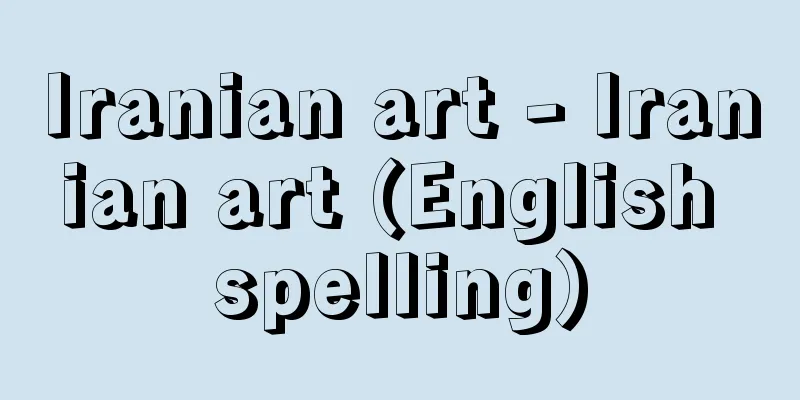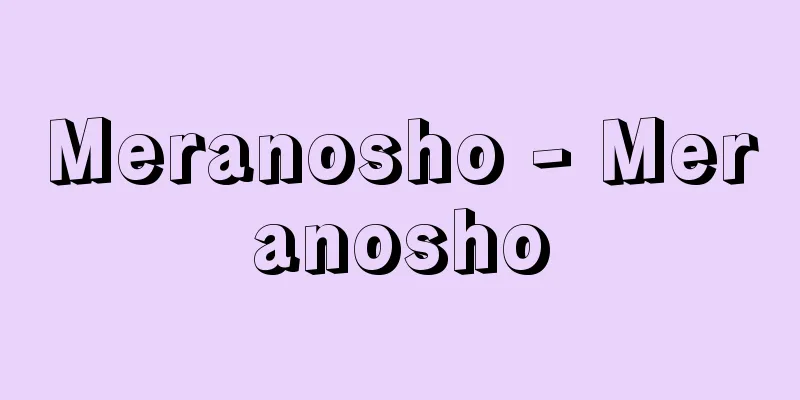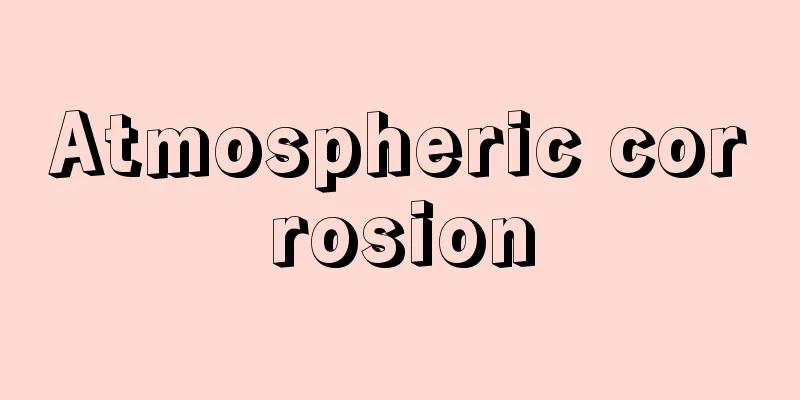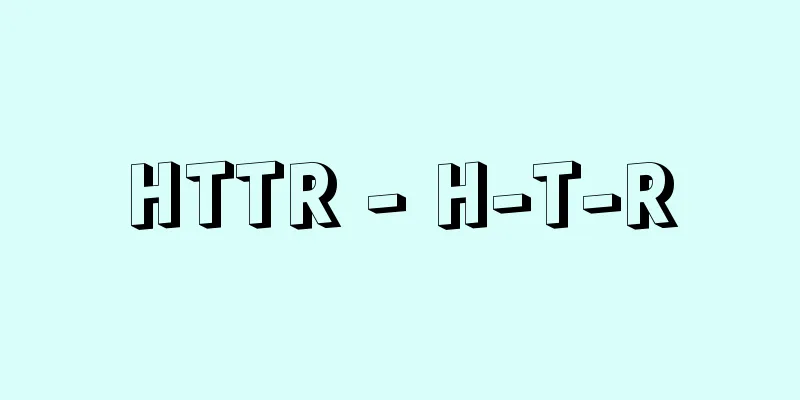Iranian art - Iranian art (English spelling)

|
Iranian (Persian) art developed mainly on the Iranian plateau. It is divided into six major periods. (1) Prehistoric period: Pottery was produced on the Iranian plateau from around 8000-7000 BC, and painted pottery was produced by early settled agriculturalists around 4000 BC. From the second half of the 2nd millennium BC, Luristan bronzeware (→ Luristan art) appeared, which indicates the nature of horse-riding nomadic culture. (2) Achaemenid period (550-330 BC): The Persian reign of Darius the Great led to the blossoming of magnificent Oriental dynastic art. The great palace architecture of Persepolis, the powerful stone reliefs, and the luxurious gold products express the powerful kingship. (3) Parthian period (3rd century BC to 3rd century AD): After Alexander the Great's eastern expedition, Greek and Iranian elements were mixed, and the fusion of the two can be seen in the ruins of Hatra. Sculptures and paintings are notable for their static and stable frontal expression. (4) Sassanid period (around 224-651): Dynastic art flourished, marking the end of ancient Oriental art. Numerous rock reliefs and gold and silver reliefs demonstrate royal power. In architecture, arches and domes, such as those seen in the huge iwan at Ctesiphon, were developed. Glass art and gold and silver ware are reminiscent of international exchange between the East and the West. (5) Early Islamic period (651-mid-13th century until the Mongol invasion): Iranian traditions and Islamic art merged and developed. During the Seljuk period, architecture such as mosques and madrasas developed in style. Ceramic techniques such as lusterware and minais, which have a metallic luster, were developed. (6) Late Islamic period: The period of maturity of Iranian and Islamic art. Miniatures and architectural tile and mosaic decorations, which flourished during the Timurid period, developed into even more elegant, delicate and gorgeous works during the Safavid period. Maidane Shah in Isfahan can be said to represent the pinnacle of beauty of perfected Iranian art. Source: Encyclopaedia Britannica Concise Encyclopedia About Encyclopaedia Britannica Concise Encyclopedia Information |
|
イラン高原を中心に発展したイラン (ペルシア) の美術。大きく6時期に区分される。 (1) 先史時代 前 8000~7000年頃からイラン高原では土器が作られ,前 4000年頃には初期定住農耕民により彩文土器が作られた。前2千年紀後半から騎馬遊牧民文化の性格を物語るルリスターン青銅器 (→ルリスターン美術 ) が出現した。 (2) アケメネス朝時代 (前 550~330) ダレイオス大王によるペルシア統-は,壮大なオリエント王朝芸術を開花させた。ペルセポリスの大宮殿建築,力強い石の浮彫,豪華な黄金製品などが強大な王権を表現している。 (3) パルティア時代 (前3~後3世紀) アレクサンドロス大王の東征以後,ギリシア的要素とイラン的要素が混在し,ハトラの遺跡には両者の融合がみられる。彫刻や絵画には,静的で安定感のある正面主義の表現が著しい。 (4) ササン朝時代 (224~651頃) 古代オリエント芸術の最後を飾る王朝美術が栄えた。多くの磨崖浮彫や金銀浮彫細工が王権を誇示している。建築では,クテシフォンの巨大なイーワーンにみられるようなアーチやドームが発達。ガラス工芸や金銀器には国際色豊かな東西交流が偲ばれる。 (5) 初期イスラム時代 (651~13世紀中頃のモンゴル侵入まで) イランの伝統とイスラム美術が融合,発展した。セルジューク朝時代にはモスクやマドラサなどの建築が様式的に発展。金属的光沢をもつラスター彩やミナイ彩など陶芸技法の発達がみられる。 (6) 後期イスラム時代 イラン・イスラム美術の爛熟期。チムール朝時代に開花したミニアチュールや建築のタイル・モザイク装飾は,サファビー朝時代になると,さらに優雅で繊細華麗なものへ発展した。イスファハンのマイダーネ・シャーは,完成されたイラン美術の美の極致を表現したものといえる。
出典 ブリタニカ国際大百科事典 小項目事典ブリタニカ国際大百科事典 小項目事典について 情報 |
<<: Iranian Constitutional Revolution - Inqilāb-i Mashrūṭeh
>>: Eland - Eland (English spelling)
Recommend
Analysis of Japanese capitalism
A book by Yamada Moritaro published by Iwanami Sho...
IrDA - Internet Design and Engineering
A method of communication using infrared light in...
Miso teeth - Misoppa
This refers to circular caries (also called ring-s...
Coastal revetment - Kaigangogan
… [Coastal conservation facilities] In order to c...
Intaglio - Ohan
In contrast to letterpress printing, this type of ...
Magnesia cement (English)
…Used for refractories, emergency construction, c...
Electric meter - Electric meter
A general term for instruments that measure quanti...
Umatilla Tangor - Umatilla Tangor
…Some varieties that are said to have been create...
Herpestes ichneumon (English spelling) Herpestes ichneumon
... The gestation period is 42 to 105 days, and t...
Motor function (machine tools) - Sports yesterday
...It was around the middle of the Meiji period t...
Picot, G. (English spelling) PicotG
...a secret agreement reached in May 1916 during ...
Violent God - Araburukami
…They are also written as 'evil gods', &#...
cache-cache
… [Toshiro Hanzawa] [Similar examples from other ...
Gohzaka - Kimimachizaka
A scenic spot in the eastern part of Futai Town, Y...
Kuin - Kuin
〘Noun〙 Buddhist term. The monks' quarters and ...









